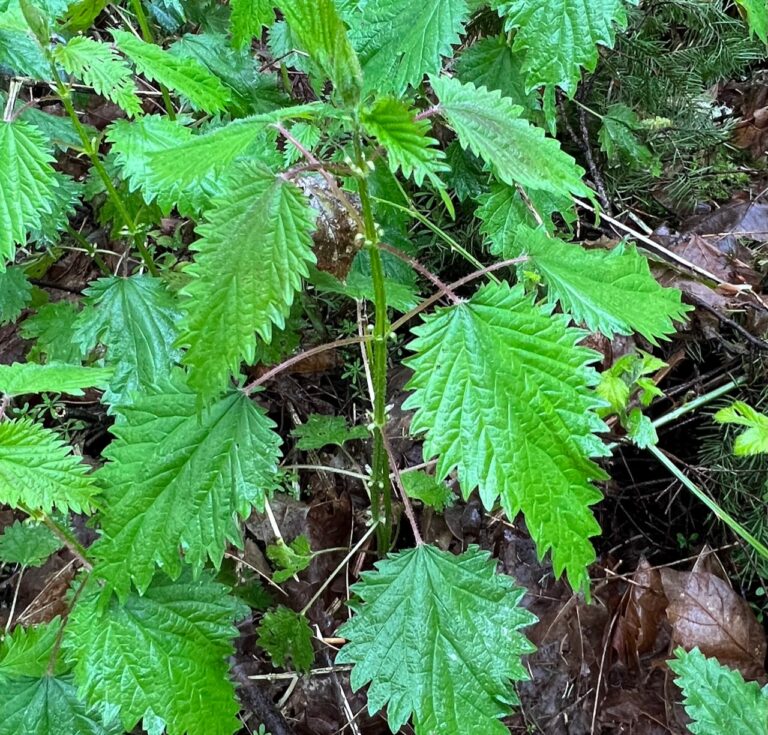Foraging For Your Health

Spring has sprung and with it, seasonal allergies. What else has sprung, nettles! Stinging nettles (Urtica dioica) grow aplenty in the PNW and you may know them from the “sting” they produce when you brush up against them (fun fact, the antidote is inside the plant). Though nettles can cause a histamine reaction with their sting, they also can prevent a reaction from consuming the very leaves that harm you.
Frequently used as a tea or tincture, the leaves are packed with quercetin – a flavonoid, which has anti-histamine properties, vitamins A, C, K, as well as some Bs. It has loads of minerals including a good dose of potassium, making it alkaline, calcium, iron, and magnesium among many others. It’s a good anti-oxidant, anti-inflammatory, and anti-aging herb, and is great for many conditions including eczema and asthma.
So why should you try this delicious recipe, because as Hippocrates once said, “Let thy food be thy medicine.”
Recipe:
- 1 cup packed nettle leaves (google how to harvest) – quercetin
- 1/3 cup lemon balm leaves (if you have it growing) – digestion, stress relief
- 1/2 cup Parmesan cheese, shredded (dairy-free or not) – adds yum
- 1/2 cup extra virgin olive oil – healthy fats
- 1/3 cup walnuts or whatever nuts/sprouted seeds you have – omega-3 fats
- 2-3 garlic cloves – more quercetin
- Squeeze of 1/4 lemon – vitamin C
- Sea salt, amount to taste – trace minerals
- Fresh ground pepper, amount to taste – vitamins and minerals
Toss it all in a food processor or mortar and pestle it in the traditional pesto way which will neutralize the acids. No need to blanch the nettles first as that takes away some of the nutrients. Add more oil if you need it creamier. Play with the flavor to your liking.
This is great with sautéed wild-harvested oyster mushrooms* atop pasta, pizza, or toasted sourdough. There is no wrong way to eat it.
Enjoy!
*Oyster mushrooms are in season in the PNW right now. Always know what you are picking.

